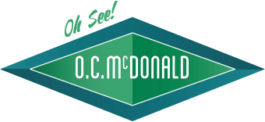As recent national disasters have shown, it is critical for businesses to include a disaster plan within a facility’s design. Just one catastrophic event can severely damage or hinder operations, while a disaster plan helps to prevent or mitigate problems stemming from a weather event or devastating accident. Preparing a policy for coping with disaster should consider including the following elements.
- Clear written policy. A succinct, clear policy that is distributed throughout the organization is essential in the event of an emergency. Protecting the facility’s structure and operations should be explained in terms that everyone can understand and be ready to implement if needed. Each employee should know what is to be done, and how to do it, if a disaster occurs. Nothing should be left to guesswork.
- Developmental sessions. Department heads and employee representatives should be included in the development of a crisis management plan so that it can fully address facility needs at every level. Questions, suggestions, and even critiques should be solicited from all employees to cover essential aspects of the disaster plan. Feedback can be analyzed and synthesized by the organizational leaders, who will then work to implement the plan into the building’s design. For example, protective window coverings may be needed in high-wind situations or in case of a military strike or other “black sky” event as defined by the federal government. Doors that can be reinforced or sealed if necessary might be another consideration. A solid flood-proof, fire-escape, or quake-proof foundation and structure may be needed in zones where those events are possible.
- Practice drills. During the design phase, practice teams may run drills to test a newly-devised disaster policy. Although the facility may not yet be erected or equipped with special safeguards, considerations like department layout and pathways to exits or basement shelters can be explored via walk-through sessions in another facility or mock-up practice. Discussions about the chain of events, alarm systems, and employee response times can be factored into a disaster policy.
No one likes to imagine that their workplace will be struck by a damaging event that may threaten property and life. But it is always wise to be prepared so that if a disaster should occur, everyone knows what to do to protect people and property.
